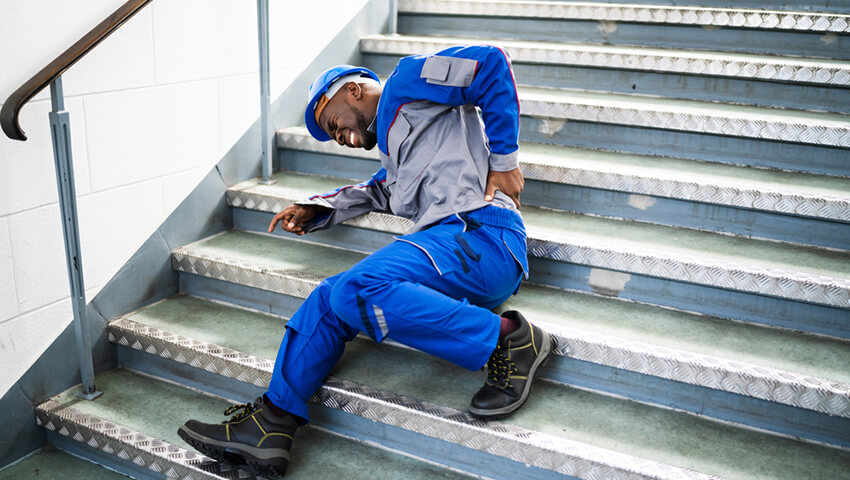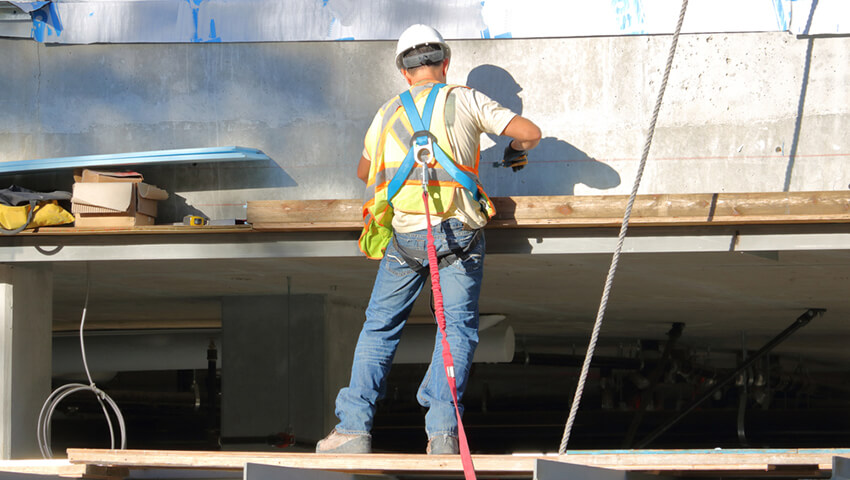Safeguarding Employees: Mitigating Slips, Trips, and Falls in the Workplace
Ensuring workplace safety is crucial for the well-being of employees and the overall success of any organization. Among the common workplace hazards, slips, trips, and falls pose significant risks. Addressing these dangers head-on is essential to create a secure work environment. In this comprehensive guide, we will explore effective strategies to mitigate slips, trips, and falls in the workplace, promoting safety and minimizing potential injuries.
Understanding the Impacts of Slips, Trips, and Falls:
Caution: Hazards Ahead!
Slips, trips, and falls can occur in any work environment, regardless of the industry. Whether it’s a wet floor in a commercial kitchen or tangled cords in an office setting, these incidents can result in severe injuries and even fatalities. It is vital to understand the potential consequences to appreciate the urgency in mitigating these risks effectively.
The Cost of Workplace Accidents
Beyond the pain and suffering endured by employees, slips, trips, and falls have significant financial implications for businesses. According to the Occupational Safety and Health Administration (OSHA), workplace falls are one of the most common causes of injuries, resulting in costly workers’ compensation claims and lost productivity. In fact, OSHA estimates that employers pay nearly $70 billion per year in workers’ compensation costs due to fall-related incidents.
Creating a Robust Safety Culture
When it comes to mitigating slips, trips, and falls, prevention should be the primary focus. Cultivating a strong safety culture within the organization is the cornerstone of an effective strategy. By prioritizing safety and making it an integral part of the company’s values and operations, employers can significantly reduce the risk of accidents.
Implementing Effective Preventive Measures

1. Identifying and Minimizing Hazards:
Start by conducting a thorough workplace hazard assessment to identify potential risks associated with slips, trips, and falls. This evaluation should include areas prone to spills, uneven surfaces, poor lighting, obstructed walkways, and untidy workspaces. Once identified, swift action must be taken to eliminate or minimize these hazards.
2. Housekeeping and Maintenance:
Maintaining a clean and organized workplace is crucial in preventing slips, trips, and falls. Regularly inspecting and addressing potential hazards like loose flooring, damaged carpets, or slippery surfaces is essential. Implementing a proper housekeeping program that includes cleaning schedules, prompt spill response, and clear signage helps maintain a safe work environment.
3. Adequate Lighting:
Proper lighting is critical to ensure employees can identify potential hazards and navigate the workplace safely. Insufficient lighting significantly increases the risk of accidents. Regularly evaluate lighting conditions and ensure proper illumination in all areas, especially in stairwells, walkways, and areas with obstructions.
4. Clear Walkways and Staircases:
Cluttered walkways and obstructed staircases significantly increase the risk of trips and falls. Employers should establish clear protocols for keeping walkways free of obstacles and ensuring stairs are well-maintained with secure handrails. Regularly remind employees of the importance of keeping these areas clear and readily accessible.
5. Quality Footwear:
Encouraging employees to wear appropriate footwear is an often overlooked but essential preventive measure. Slip-resistant shoes or boots can significantly reduce the risk of slips and falls, especially in environments prone to spills or wet surfaces. Educate employees about the importance of suitable footwear and provide recommendations for the ideal options.
6. Training and Awareness Programs:
Education plays a vital role in preventing workplace accidents. Training programs should be implemented to ensure employees are aware of the potential hazards associated with slips, trips, and falls and are equipped with the knowledge to prevent them. Such programs should cover safe walking techniques, hazard identification, and reporting procedures for potential risks.
7. Promoting Employee Engagement:
Empowering employees to actively participate in workplace safety initiatives fosters a positive safety culture. Encourage workers to report potential hazards promptly and provide feedback on safety protocols. Regularly involve employees in safety meetings and discussions, allowing them to communicate their concerns and suggestions for improvement.
8. Regular Safety Inspections and Reviews:
Prevention is an ongoing process. Regularly conduct safety inspections and audits to identify any new hazards or areas that require attention. Address these issues promptly to ensure
continuous improvement and maintain a safe work environment.
Prioritizing Employee Safety for a Successful Workplace
Mitigating slips, trips, and falls in the workplace is a shared responsibility that requires the commitment and active participation of employers and employees alike. By implementing preventive measures, fostering a safety-conscious culture, and maintaining a proactive approach to mitigating risks, organizations can create a secure environment that protects employees and ensures their well-being.
Remember, prioritizing safety is not only essential for preventing accidents and reducing costs but also for creating a positive work environment where employees can thrive. By investing in comprehensive safety strategies, organizations can safeguard their most valuable asset: their employees.
Promoting safety in the workplace is a continuous journey, one that requires ongoing assessment, improvement, and vigilance.








